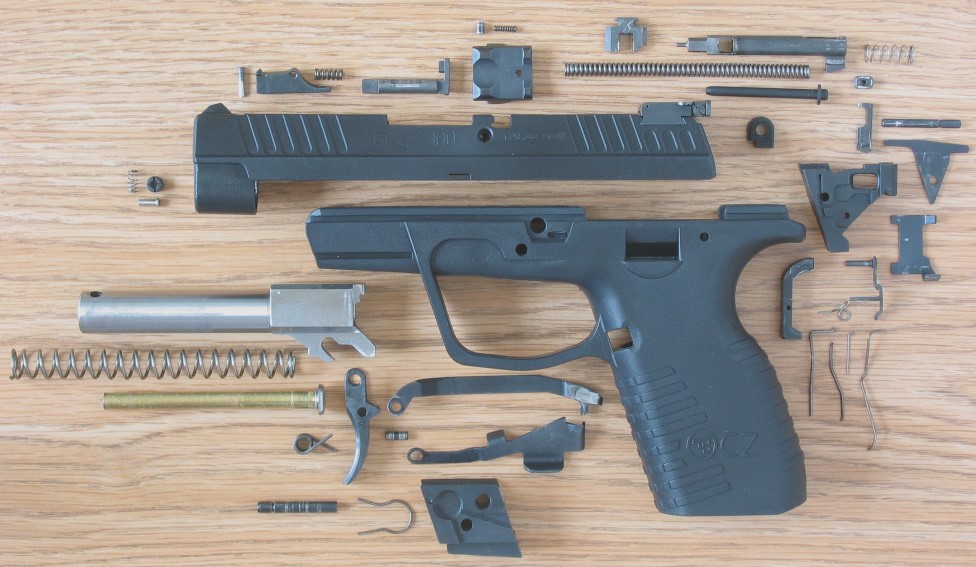
“Foreseeability is not culpability.” The mantra, repeated ad nauseam across the legal world, lies at the center of an emerging battle between one of America’s largest gun makers and a well-funded activist campaign. Starting in early November 2025, Everytown for Gun Safety began ramping up its legal and public pressure on Sturm, Ruger & Co. to take its RXM pistol off the market. The charge a Glock-pattern design makes it too easy to convert into a machine gun.
This isn’t some fringe skirmish The RXM was launched in December 2024 with broad Gen 3 Glock compatibility, and its debut came after years of mounting concern over machine gun conversion devices-MCDs. With Glock already redesigning certain pistols under legal fire, activists see Ruger as the next-and potentially largest-source of “easily convertible” handguns. The stakes go far beyond one model and touch on liability theories, design philosophy, and the limits of preemptive regulation.

1. The Activist Playbook Moves from Glock to Ruger
Everytown’s letter to Ruger parallels tactics used against Glock reference growing MCD recoveries, frame design compatibility as a public safety hazard, and lean on state attorneys general to increase the pressure. Data from the group itself shows there has been a 784 percent increase in MCD recoveries from 2019 to 2023, though it concedes no public reports yet exist of RXMs recovered with illegal conversions. Absence of direct evidence hasn’t slowed the push activists say it’s “only a matter of time.”

2. Design Compatibility as Legal Exposure
Market positioning for the RXM promises “virtually all Glock accessories” and near-drop-in Gen 3 parts interchangeability. That feature set is a selling point to enthusiasts but also the crux of Everytown’s claim if a Glock switch fits a Glock, it will fit a Glock-like pistol. Connecticut’s Attorney General William Tong has warned Ruger that such compatibility could be in violation of state laws like the Firearms Industry Responsibility Act if it’s reasonably foreseeable to promote illegal conversion.

3. The Machine Gun Conversion Device Surge
Federal statistics reveal recoveries of MCDs are on the rise, with the ATF creating a specific category just this year. In Minnesota alone, 58 MCD trace requests were made in 2023. Devices – often plastic, the size of a Lego piece – can be had for less than $20, or 3-D printed, allowing pistols to fire up to 1,200 rounds per minute. As law enforcement notes, while accuracy goes down, the danger to bystanders goes up.

4. Legal Precedent and Manufacturer Liability
Mrgunsngear argues that manufacturers of firearms have wide product-liability protections for their lawful products when they are misused, but recent suits against Glock in Chicago, Minnesota and New Jersey have survived motions to dismiss. If the courts embrace “could be converted” as a basis for liability, then manufacturers will face constant demands for product redesigns. That could chill innovation and shift R&D priorities away from performance to litigation avoidance.

5. The ‘Not Yet, But Soon’ Standard
The Liberty Doll opinion seems to emphasize what seems to be the larger predictive theory of Everytown liability for injury not yet inflicted. In this case, RXM, whether criminal modification is foreseeable and hence culpable is the linchpin which would reverse ordinary rules of product liability which usually demand actual misuse and harm. Critics argue such a standard could apply well beyond firearms to many other industries where products might be misused.

6. 3D Printing and the Debate about Conversion
Advances in consumer 3D printing have made MCD production trivial for those with basic skills. Designs are shared and iterated upon by the community in GunCAD some files have been downloaded more than 11,000 times. Law enforcement has documented extremists, teenagers, and traffickers using 3D-printed parts to sidestep regulation. This parallel supply chain muddies arguments that changes in manufacturer design alone can effectively prevent illegal conversions.

7. State-Level Legal Innovations
Other states, like Connecticut, have laws allowing civil enforcement against manufacturers whose designs foreseeably promote illegal conversion penalties include injunctive relief, punitive damages, and per-violation fines. In other states, distribution of blueprints has been restricted, or serialization of self-made frames is required. These frameworks create many avenues of activist and AG action without requiring the advent of federal legislation.

8. Messaging and Market Dynamics
Public narrative plays a strategic role Glock’s “capitulation” serves as a cautionary tale for Ruger. Social media chatter in the wake of Glock’s redesign was full of predictions that the RXM would “take over the market.” Activists seize on such comments as evidence of intent or recklessness. Manufacturers view them as evidence of consumer enthusiasm for compatibility and customization.

9. The ways forward for Ruger
Ruger can dig in, redesign, or segment markets to avoid high-risk jurisdictions. Each option involves legal, financial, and reputational costs. Observers note Ruger’s history of fighting activist frameworks, including the very harm assessment those shareholders had demanded. If the company digs in, smaller brands may follow its lead if it folds, the “copy-and-paste” effect might spread throughout the industry.
But the RXM fight is about more than one pistol it is a design-philosophy, liability-theory, and activist-strategy collision in the 3D-printed era of aftermarket parts, in which lawful customization meets illegal modification. Whether Ruger resists or redesigns will shape not just its future but the trajectory of Glock-pattern engineering across the U.S. firearms market.


